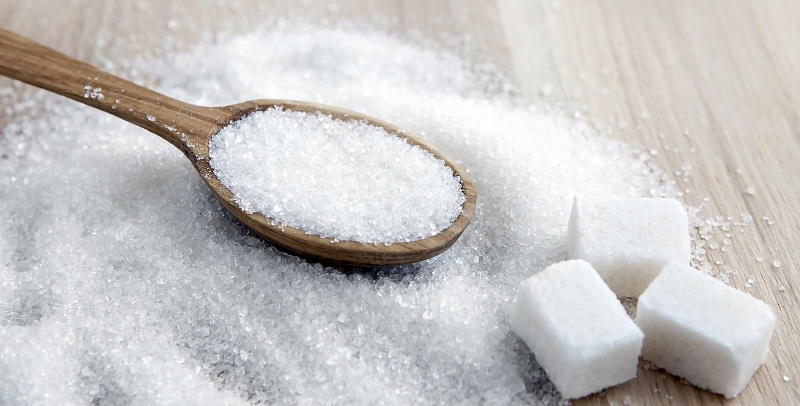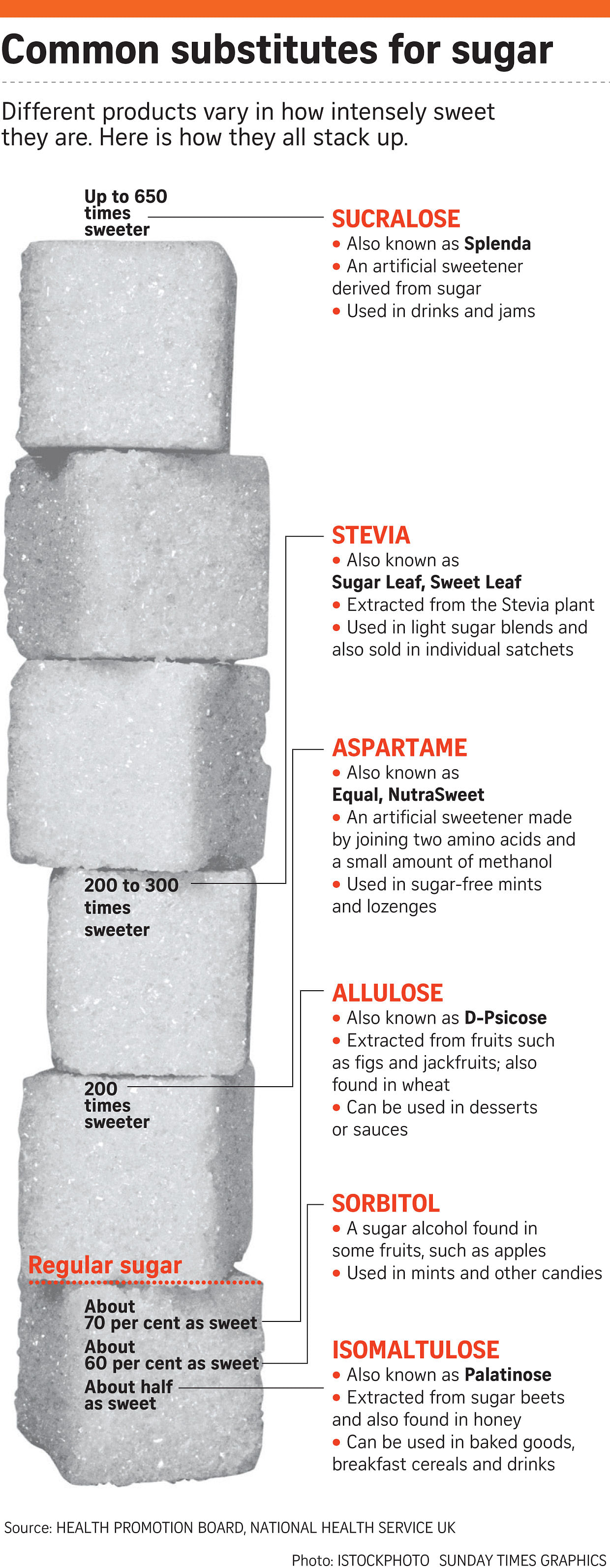Are sugar substitutes the answer to Singapore's war on diabetes?
F&B outlets struggle to use healthier sugar substitutes, citing taste and texture differences
Sign up now: Get ST's newsletters delivered to your inbox

Although a wide variety of sweeteners exist in the market, many are imperfect substitutes for sugar, despite decades of research.
PHOTO: VIBES
Follow topic:
From pad thai to pork ribs, the Health Promotion Board (HPB) is hoping that chefs will go easy on sugar to help Singaporeans stave off diabetes. But how far will this go in an industry where flavour is king and sugar often plays a major role?
Although a wide variety of sweeteners exist in the market, many are imperfect substitutes for sugar, despite decades of research. Stevia, for instance, is several hundred times sweeter than cane sugar, and only a tiny pinch is needed to flavour drinks. But people have complained that the natural sweetener has a bitter metallic aftertaste.
And no substitute can mimic the other properties of sugar, which adds bulk and improves the texture of foods, from yogurts to sauces to desserts. When heated, sugar also browns to create additional flavour.
But the stakes are high, with diabetes a serious health concern here, and the average Singaporean taking 12 teaspoons of sugar a day, above the recommended daily intake of nine to 11 teaspoons.
One way of curbing sugar intake is by replacing cane sugar with natural alternatives.
Such is the search for a healthier sugar substitute that the Coca-Cola Company last year announced a US$1 million (S$1.33 million) prize for "a natural, safe, reduced, low-or no-calorie compound that creates the taste sensation of sugar when used in beverages and foods".
A spokesman for Ya Kun Kaya Toast said it has worked with HPB to encourage customers to buy low-sugar beverages at its outlets. However, it has not substituted sugar with alternatives.
Said the spokesman: "The consistency and taste would be affected."
HPB, as part of a plan announced last week to cut Singaporeans' sugar intake by nearly a quarter by 2020, hopes to resolve the issue by encouraging manufacturers to partially replace the sugar in their foods with allulose and isomaltulose. Both are white, grainy, come from natural sources and resemble regular table sugar.
They are, however, less sweet and have a lower glycaemic index (GI). This index is a measure of how quickly food affects a person's blood sugar level. In low-GI foods, energy is released more slowly, preventing blood sugar spikes.

Restaurant chain Tung Lok has started using allulose in some of its dishes, including Chinese New Year classics such as niangao (rice cake) and yusheng (raw fish salad served with sweet syrup).
But working with the new ingredient was not easy. The founder of ice cream cafe chain Udders, Mr David Yim, who created a coconut ice cream with allulose for Tung Lok, recalled the struggle to make it taste and feel just right. Early batches melted too quickly or were too hard. "It took us three weeks and more than 50 tries," he said.
Nestle Singapore, which counts Milo and Kit Kat among its products, said it has started using sugar alternatives and will "progressively phase this into relevant products". It declined to give further details.
The company has had a policy on sugar since 2007 and published an update last year. In it, it pledged to reduce added sugars in its products by an average of 5 per cent over four years.
A spokesman said the company has done research on how to reduce sugar without compromising taste. He added it needs to do "further scientific research" and find ways to ensure that products using sugar substitutes remain affordable.
Despite the health benefits, isomaltulose and allulose are more expensive than regular sugar, said Mr Stewart Tan, a senior lecturer at Nanyang Polytechnic's School of Chemical and Life Sciences. Allulose costs between $6 and $9 per kg, said Mr Tan, while isomaltulose costs up to $28 per kg. The same amount of sugar costs about $1.
Mr Christian Philippsen, managing director of isomaltulose producer Beneo Asia-Pacific, said isomaltulose was discovered about 60 years ago. "For a long time, we did not invest further as the market was not there," he said on attempts to make it commercially available.
Professor Jeyakumar Henry, who is studying isomaltulose, said it is very similar to sucrose, or regular table sugar. Both are composed of two simple sugars known as glucose and fructose.
However, the components are bonded in different ways.
"In isomaltulose, it takes much longer to break this bond," said Prof Henry, who heads the Clinical Nutrition Research Centre. "This gives you a slow release of energy."
His research has also found that people who consume isomaltulose with each meal have a lower GI response for the whole meal, compared with those who take sugar.
Regularly consuming high-GI foods can cause spikes in blood sugar, which raise a person's chances of developing diabetes.
In 2015, a report by the International Diabetes Federation found Singapore has the second-highest proportion of diabetics among developed nations.
All these sugar substitutes have been studied in depth before being approved for use, said Dr Kalpana Bhaskaran, who is domain lead for applied nutrition and glycaemic index research at Temasek Polytechnic's School of Applied Science.
However, she added that "moderation is warranted" until long-term risks and benefits are more fully understood. But it will take time before these alternatives become mainstream, say people in the industry.
"For consumers, this is something very new," said dietitian Jaclyn Reutens, who is from Aptima Nutrition and Sports Consultants. "They will need time to adjust to new kinds of ingredients."

